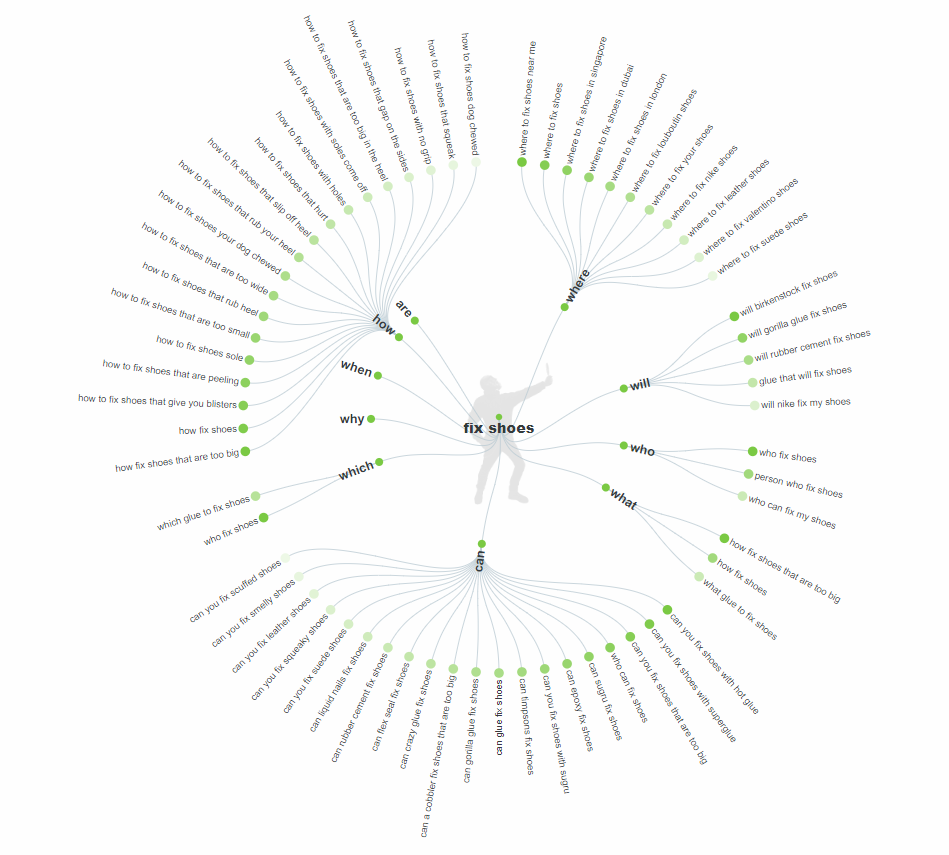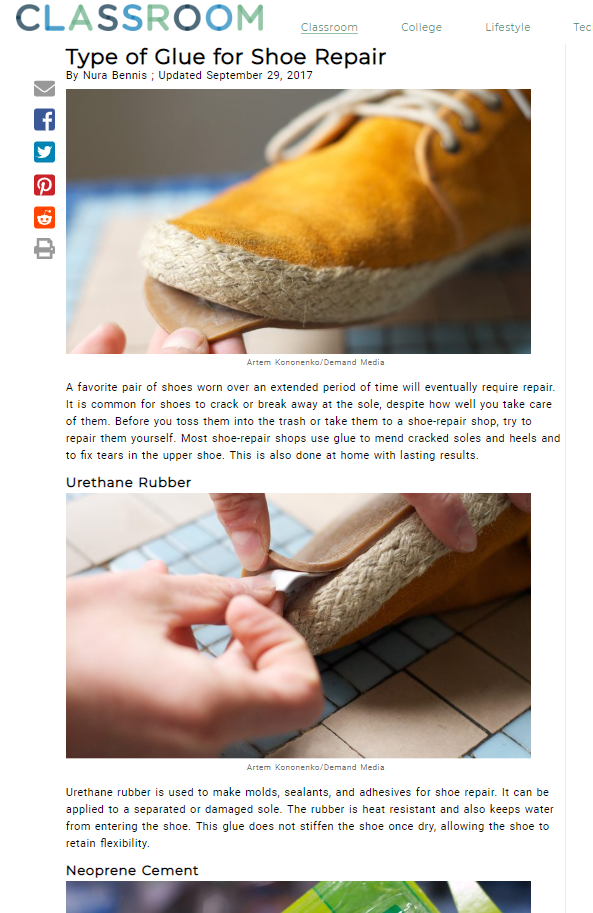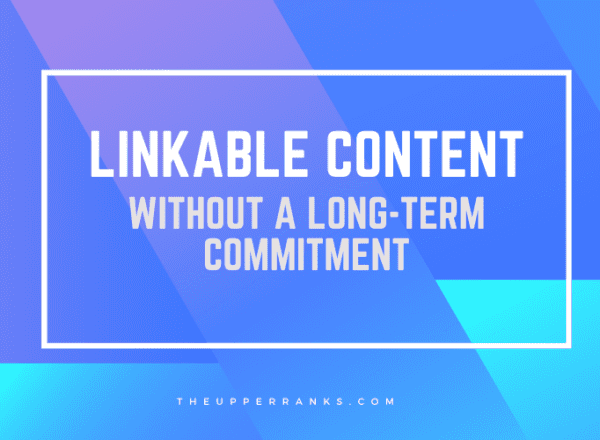In my experience as a link builder, building links requires, at least, one linkable asset— but linkable content doesn’t need to be word-heavy “ultimate guides” or heavily-researched reports.
Many business owners and marketers hate writing.
This goes for both small businesses and enterprise-level corporations. Many Fortune 500 CEOs have their autobiographies and business “how to” books ghostwritten or, at the very least, co-authored.
The same goes for marketers. Not every marketer is a natural copywriter.
And that’s okay. We all have natural skills and talents.
Some of the best marketers, link builders and business people I know aren’t natural writers.
But you have to create linkable content to build links, right?
If you dread writing, that statement might induce a mild amount of panic.
You might think that you can’t compete if you’re not a good writer.
That’s not necessarily true.
In fact, you can create fantastic link assets without writing more than a few words at a time.
Think about some of the most popular websites on the internet:
- BuzzFeed
All thrive on aggregating content from other people. With Reddit and Facebook, users make content or post links to content they like. Before BuzzFeed made in-depth journalism pieces and videos, they often scraped noteworthy content from Reddit.
BuzzFeed’s famous listicles are often just popular photos, taken from other websites and social media profiles, and put into a specific order with a unifying theme. Your ‘31 Cats Who Hate Mondays’ or ‘25 Gifs that Explain Your Feelings When The Office Runs Out of Coffee’ or whatever else.
And they’re hugely popular.
You can do a similar concept by building a useful resource page tailored to your target audience’s likes, wants, and needs.
As long as it’s helpful to your audience, you can build a resource page with confidence, knowing it will serve as a viable linkable asset.
I’ll have a few other ideas for content-lite linkable assets at the end of this post, but I believe resource pages are the most universally practical and doable
And they also happen to be my personal favorite.

Let’s get started.
Resource Pages
A Resource Page is, simply put, a well-curated page featuring helpful links and resources on any given topic.
This is the type of page someone passionate about a topic would actually bookmark for future reference.
To create a successful resource page, you just have to do two things:
- Link to content your audience will appreciate and find useful
- One-up any resource pages your competitors have built
You can one-up your competition by creating a similar, but more comprehensive resource page than what they’ve already built. You can also outmaneuver them by thinking outside of the box and doing something different.
We’ll look at both methods.
In either case, think of it as making the perfect mixtape for your audience.
You want to include their favorite hits, but you also want to include some obscure tracks they’d never hear otherwise.
Make your audience feel like they’re finding a buried treasure.
Resource Page Basics
For this article, let’s say you own a shoe repair store. You want to pool together a big resource page for DIY shoe repair. You know your customers can do light repairs at home, but they’ll need your services for more complex work.
I’d start with a basic Google search for “shoe repair how to.”
Then, I’d execute a more “long tail” search to find better, more varied content.
Try typing simple questions into Google. You’ll be surprised at what you might find.
You can also use a free app like AnswerThePublic to find popular questions people are asking and then search for the best content that answers these questions.
Here’s a simple search for ‘fix shoes’:

The search returned a number of popular questions, and it looks like a great starting point.
You’re bound to find more by testing different search variables.
YouTube is also an excellent place to come up with DIY ideas and will also have some very helpful solutions:
Here’s a search for ‘DIY shoe repair’ on YouTube:

We’re already seeing some great stuff.
If you were building a shoe repair resource page, you can have a section on ‘How to Resole Shoes From You Home‘ and include links to a couple of the best YouTube tutorials you found plus other helpful guides and how-to’s you discover.
You can also see how many shares each piece of content has, and how many sites link to each domain.
It’s a great way to sort out quality content from the mediocre stuff.
Building a resource page just takes a little bit of search ingenuity.
Resource pages are living documents, and you can always add more as you go along. The more you add, the better the page becomes– and you don’t have to do it all at once.
A Personal Touch
To make an even great resource page, add a personal touch.
And, sorry– but it requires a tiny bit of writing.

To separate your resource page from the herd, write a brief description of each link. It doesn’t need to be anything fancy.
Two to three sentences will always be enough. Talk about why you chose it and tell the user exactly how it will benefit them.
Writing these small descriptions serves several purposes:
- It helps search engines decipher what your page is about
- It gives your page a real word count
- It helps the user decide which links to click
- It lets the user know you’ve put real thought into your resource page, meaning it’s not just a random collection of links
Here’s a good example of exactly what I’m talking about in the Astronomy industry.
You could make something look a little nicer than that, but it gets the job done.
It explains why each link is there, and it’s a suitably useful astronomy resource page– and it is decidedly not fancy.
Building Links
Once you’ve built a robust resource page, it’s time to build links.
This is Inception-like, but you’ll want to add your resource page to other resource pages.
You might find bloggers to link to it in their regular content, as well, but you’ll have your best luck building resource links.
Think outside the box when you’re looking for resource pages. If you create a simple shoe repair resource page, another simple shoe repair resource page might not want to link to you.
A DIY fashion resource page would be glad to have you, however.
Think along those lines and here are a few helpful guides once you’re ready to start building links:
- The Realist’s Guide to Link Prospecting
- The Realist’s Guide to Link Building Outreach
- The Realist’s Guide to Link Building
A Few More Ideas
Resource pages aren’t the only way to build links without writing a ton of content.
As promised, here are three more ways to create linkable assets without typing up thousands of words.
Infographics
So much has already been said about infographics. I honestly wouldn’t know where to begin.
And, chances are, neither would you.
You might be intimidated by infographics, but there are several free (or cheap) tools available on the web to help you create them in a couple of hours.
Infographics are oversaturated in some markets, but they still work.
The key is to success is by taking the time to research and come up with compelling data points.
Here are my rules for infographics:
- Find compelling research
- Use multiple sources
- Always cite every source, every time and include them in a ‘sources’ section– give credit where credit is due.
- Write a brief intro to the Infographic in order to give context.
If infographics interest you, start by reading this article at HubSpot.
Then, when you’re ready to create your infographic, use one of these free (or cheap) tools:
Visual Guides
Visual guides function a lot like how-to posts but rely on photos instead of written content.
Think of sites like eHow and WikiHow. They’re hugely popular, they rank well, and, at the best of times, they’re actually useful.
You don’t have to be a professional photographer to make a visual guide. Just photograph yourself or an employee working, document each step of the process, and embed the photos into a post on your website.
Let the photos speak more than any words on the page. Keep it both simple and useful.
Let’s go back to shoe repair again. You could easily create a step-by-step guide to repairing penny loafers.
Have a look at this:

Most photos in this article, I kid you not, are photos of a person holding different types of superglue.
If you were really in the shoe repair field, you could blow that out of the water with an hour’s work and almost no writing.
You can also embed videos from YouTube into your visual guide as “further references.” Find your favorite video tutorials and embed them at the end of your post. It creates a better experience for the user, and you’re helping to place good content in front of new eyes.
Simple Tools
Finally, you can host a simple web-based tool. Think of all the mortgage calculators and business-specific Google maps you see around the web. And the thing is, they work!
You have a few options here. You can build it yourself, you can try to find a cheap programmer, or you can hire an experienced programmer.
If you want to do it yourself, you must search for tools and resources on a case-by-case basis.
If you wanted to build a type of calculator, like something that tells you how long your shoelaces might last, or how often you need to polish certain brands of shoes, you could try these sites:
If you wanted to build a more in-depth tool that could analyze any photo and identify the shoes of the people in the picture, you’d expect to spend a pretty penny on a professional programmer and you can try a site like guru.com.
For tools, make sure you’re creating something your audience will use.
Take a survey of your existing customers if necessary– just make sure what you’re putting time or money into won’t be neglected by your user base.
Wrapping it Up
To build effective, relevant links, you need at least one linkable asset.
Thankfully, you don’t have to be a great writer to succeed with this.
As long as you create something useful, and put real thought behind it, you can succeed, even in small niches and competitive industries.
You just need to look at it the right way and approach the work from the correct angle.
If you build something useful and contact the right webmasters, you’ll barely have to write a word!

Comments